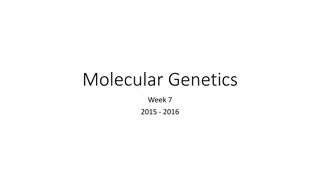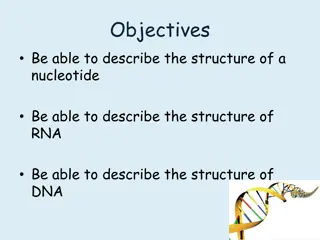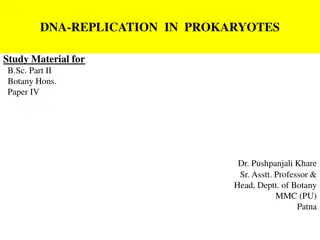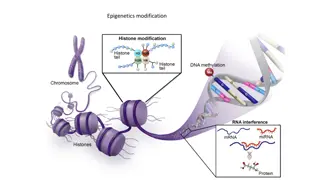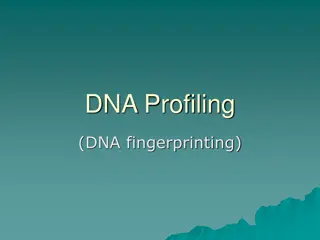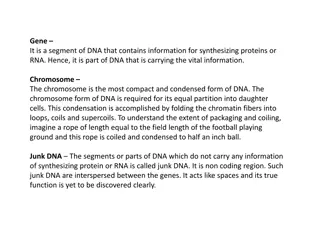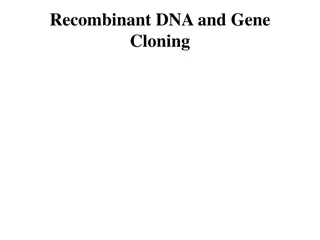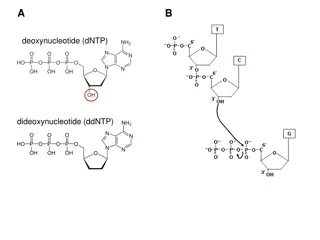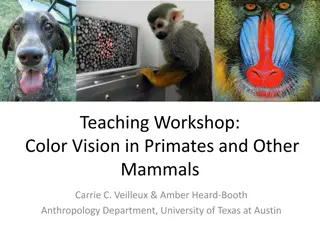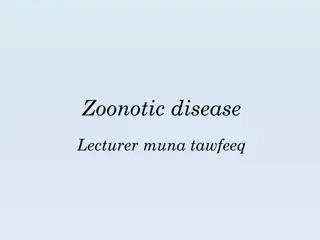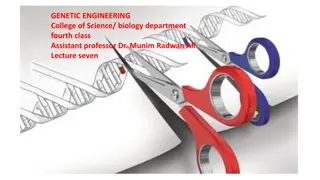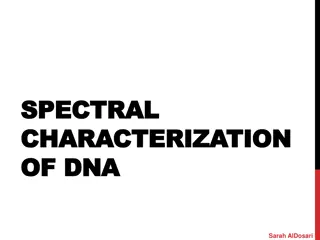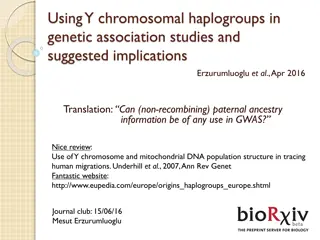Evolutionary Insights from Mitochondrial DNA Analysis in Primates
Studies by Ferris et al. and Cann et al. utilized mitochondrial DNA analysis to understand the evolutionary relationships among apes and humans. The application of parsimony to restriction sites revealed the closest genetic ties between species and proposed an African origin for human colonization. Neighbour-joining phylograms and mutation rates provided further insights into the divergence times between species. Endicott et al. explored human migration pathways through a combination of fossil evidence and genetic data.
Uploaded on Sep 24, 2024 | 4 Views
Download Presentation

Please find below an Image/Link to download the presentation.
The content on the website is provided AS IS for your information and personal use only. It may not be sold, licensed, or shared on other websites without obtaining consent from the author.If you encounter any issues during the download, it is possible that the publisher has removed the file from their server.
You are allowed to download the files provided on this website for personal or commercial use, subject to the condition that they are used lawfully. All files are the property of their respective owners.
The content on the website is provided AS IS for your information and personal use only. It may not be sold, licensed, or shared on other websites without obtaining consent from the author.
E N D
Presentation Transcript
Ferris et al PNAS 1981 Evolutionary tree of apes and humans based on cleavage maps of mtDNA Figure compares restriction fragments in humans and gorillas for two different enzmes. Bands change due to point mutations in restriction sites. A shift in both these patterns corresponds to a 95 bp deletion in Gorilla.
Restriction site map of 5 species 42 sites that are either present or absent in each species
Applying parsimony to restriction sites means finding the tree with the fewest possible changes in the sites. The most parsimonious tree for these data has 67 mutations in 42 positions. This places Gorillas and Chimps closer than Humans (almost cetainly wrong). The alternative tree with Chimps and Humans closer than Gorillas has 68. This is now thought to be the correct tree using other types of sequence data.
Cann et al, Nature 1987 Mitochondrial DNA and Human Evolution Parsimony Tree of 134 human mitochondrial sequences 398 mutations in restrictions sites One of the two primary branches leads exclusively to frican sequences. Suggests an African origin. Dates of colonization (archaeological) 12000 yrs for New World 30000 yrs for New Guinea 40000 yrs for Australia Assume constant rate of evolution Mean rate of evolution is 2%-4% per million years Hence age of Eve is 140000 290000 yrs
Neighbour-joining phylogram based on complete mtDNA genome sequences (excluding the D-loop). From Ingman et al Nature 2000
From the mean genetic distance between all the humans and the one chimpanzee sequence (0.17 substitutions per site) and the assumption, based on palaeontological10 and genetic11 evidence, of a divergence time between humans and chimpanzees of 5 Myr, the mutation rate () for the mitochondrial molecule, excluding the D-loop, is estimated to be 1.70 10 -8 substitutions per site per year. This is 0.017 per million years close to 2% per million years in the previous paper
Endicott et al Trends in Ecol and Evol (2009) Deducing human migration pathways from fossils and reconciling with genetic evidence
Endicott et al Trends in Ecol and Evol (2009) Dating the important branchpoints on the tree depends on rate calibrations. Still difficult to do precisely
A revised timescale for human evolution based on ancient mitochondrial genomes. Fu et al (2013) Current Biology Sequence fragments of mtDNA from a fossil specimen and assemble the genome. Radiocarbon dating to get the age of the sample. Gives good calibration. Otherwise the date of the human chimp split is much farther back (5-7 million years) and is much less certain.
Selection is also important Apparently faster evolution on more recent branches



